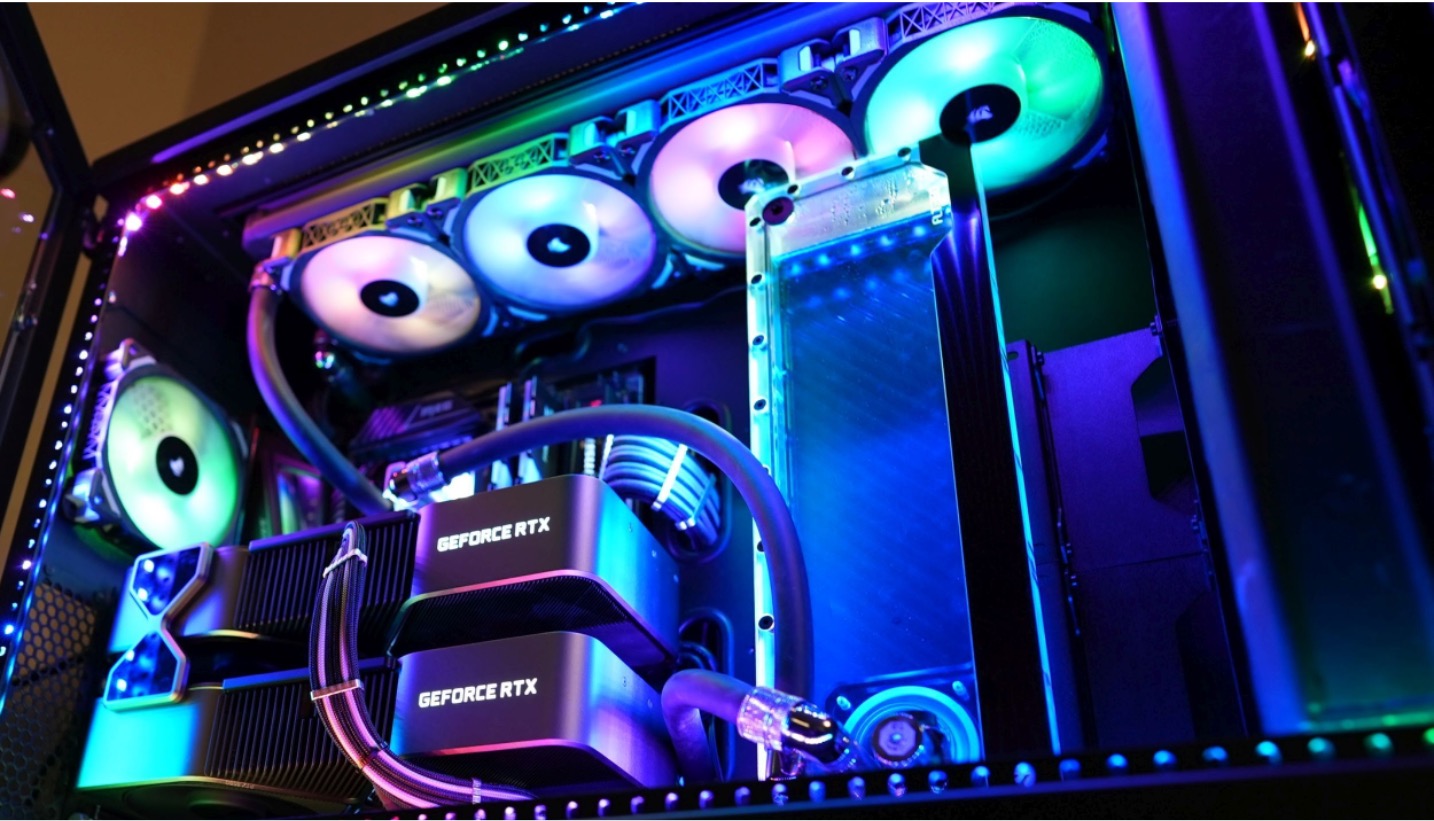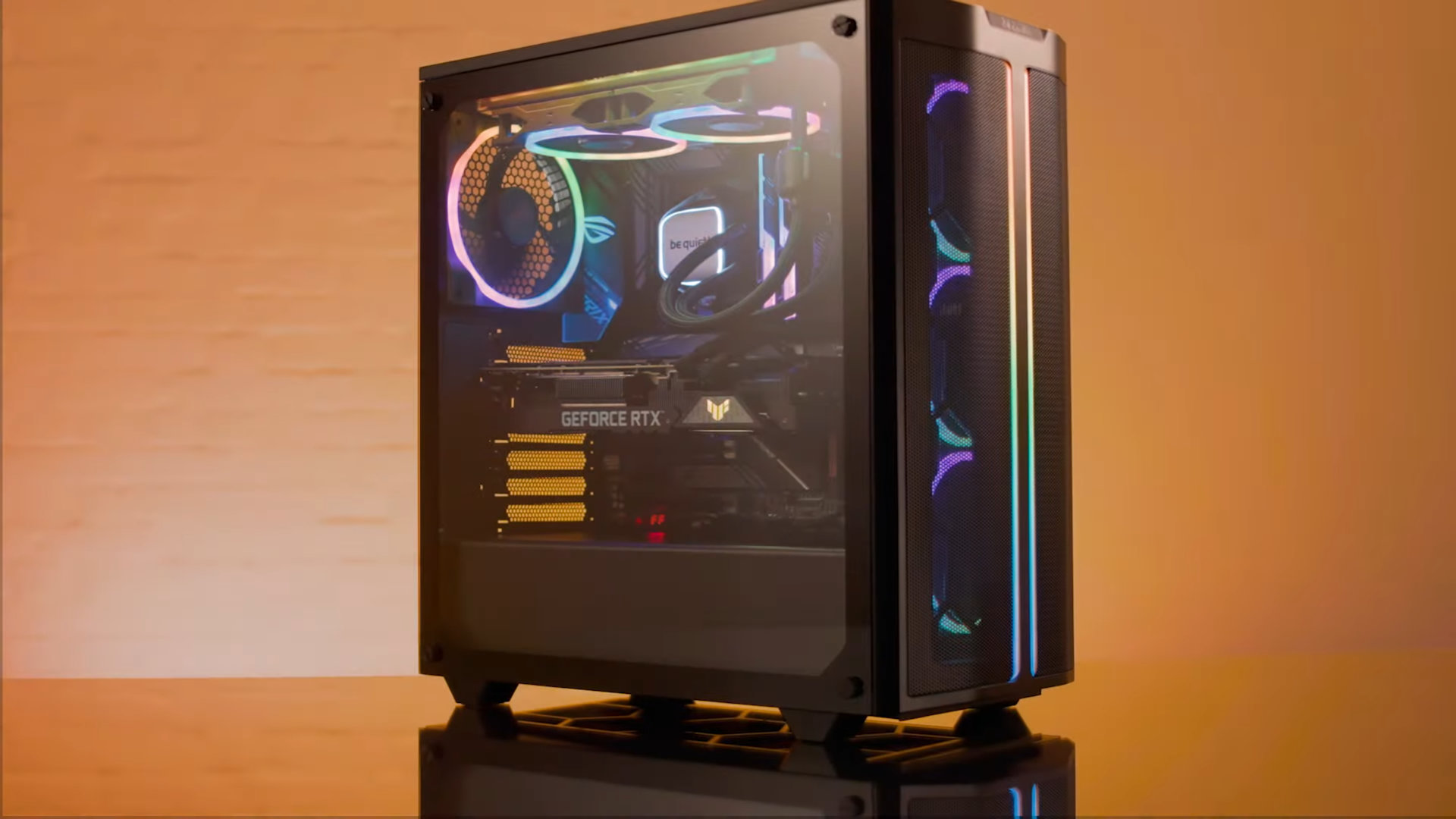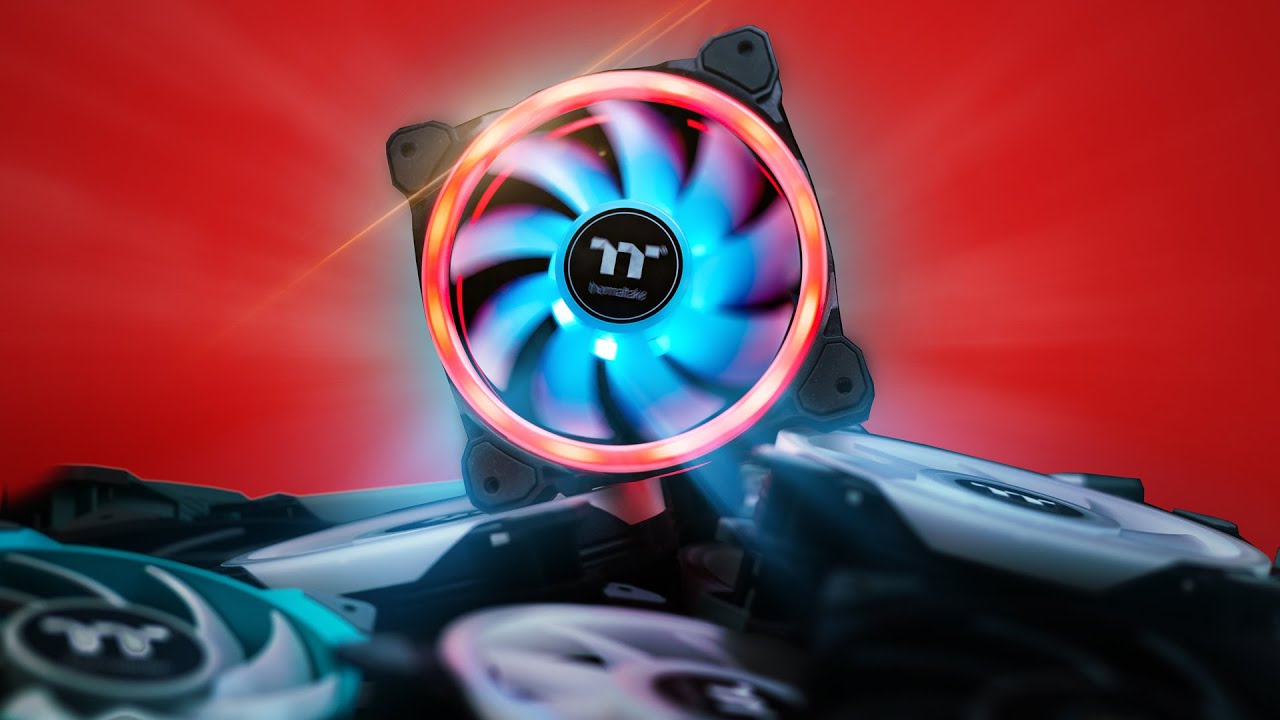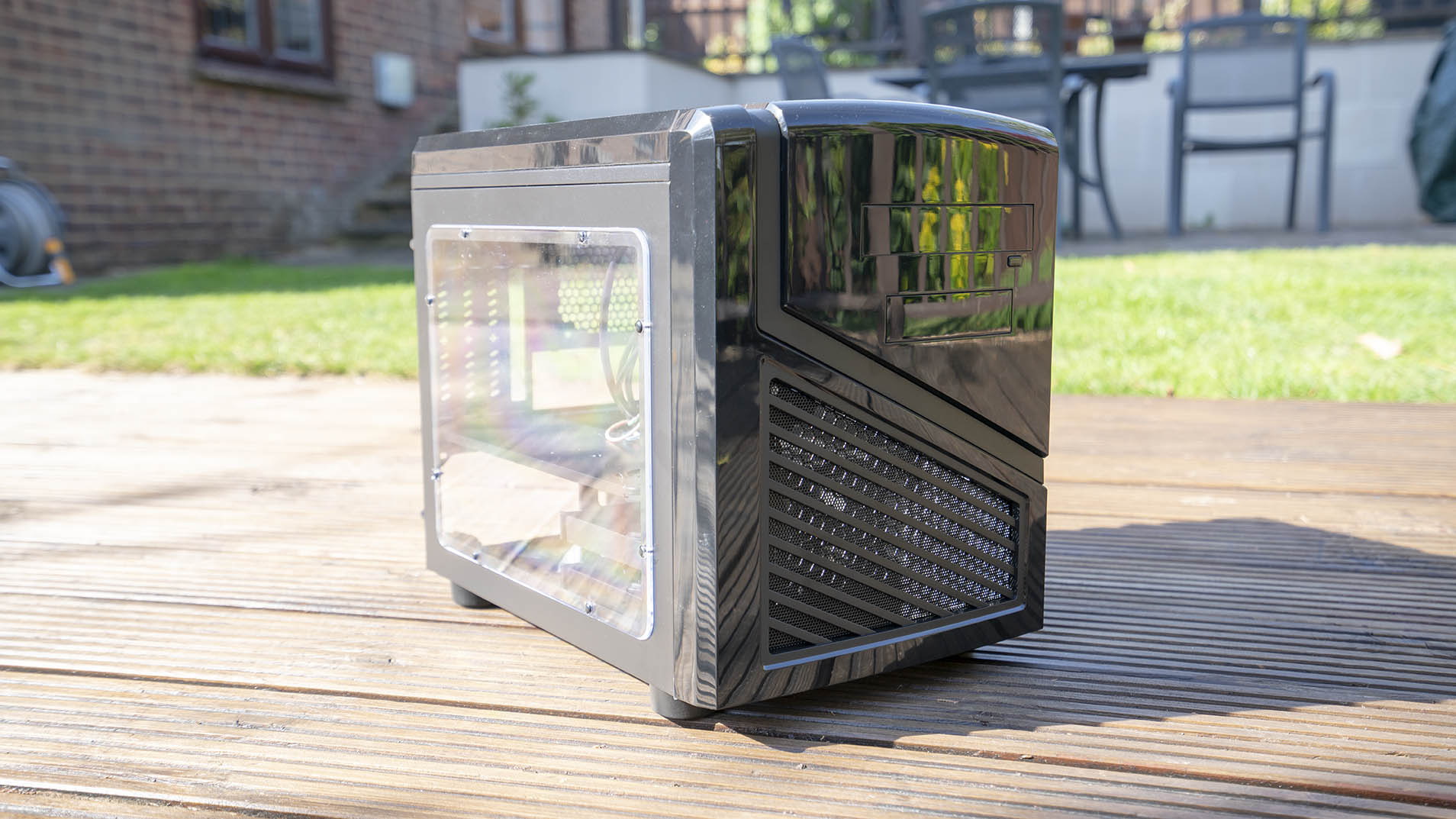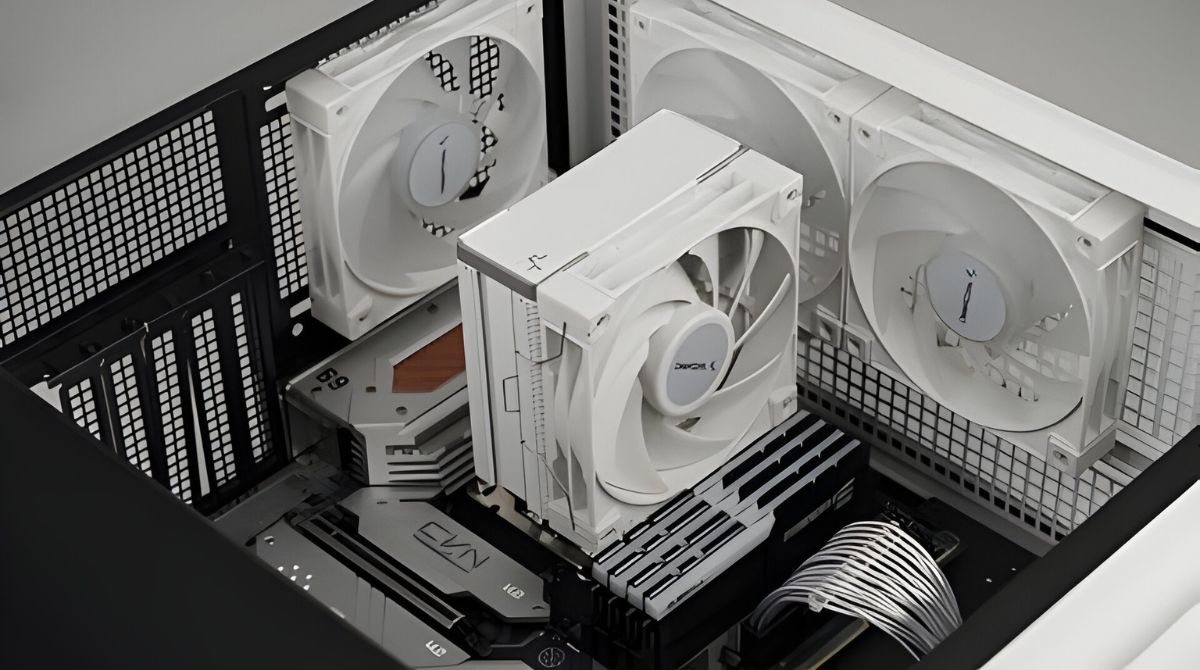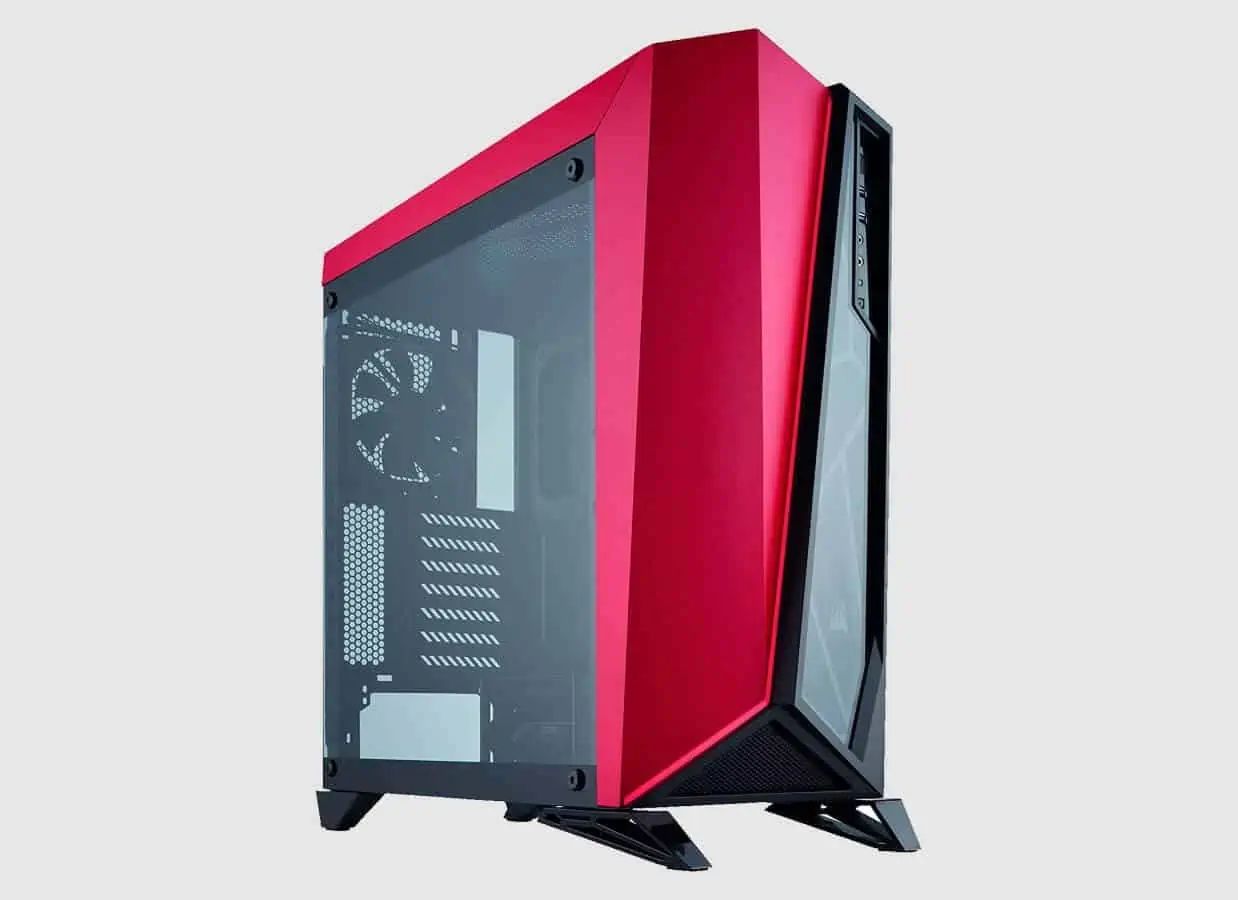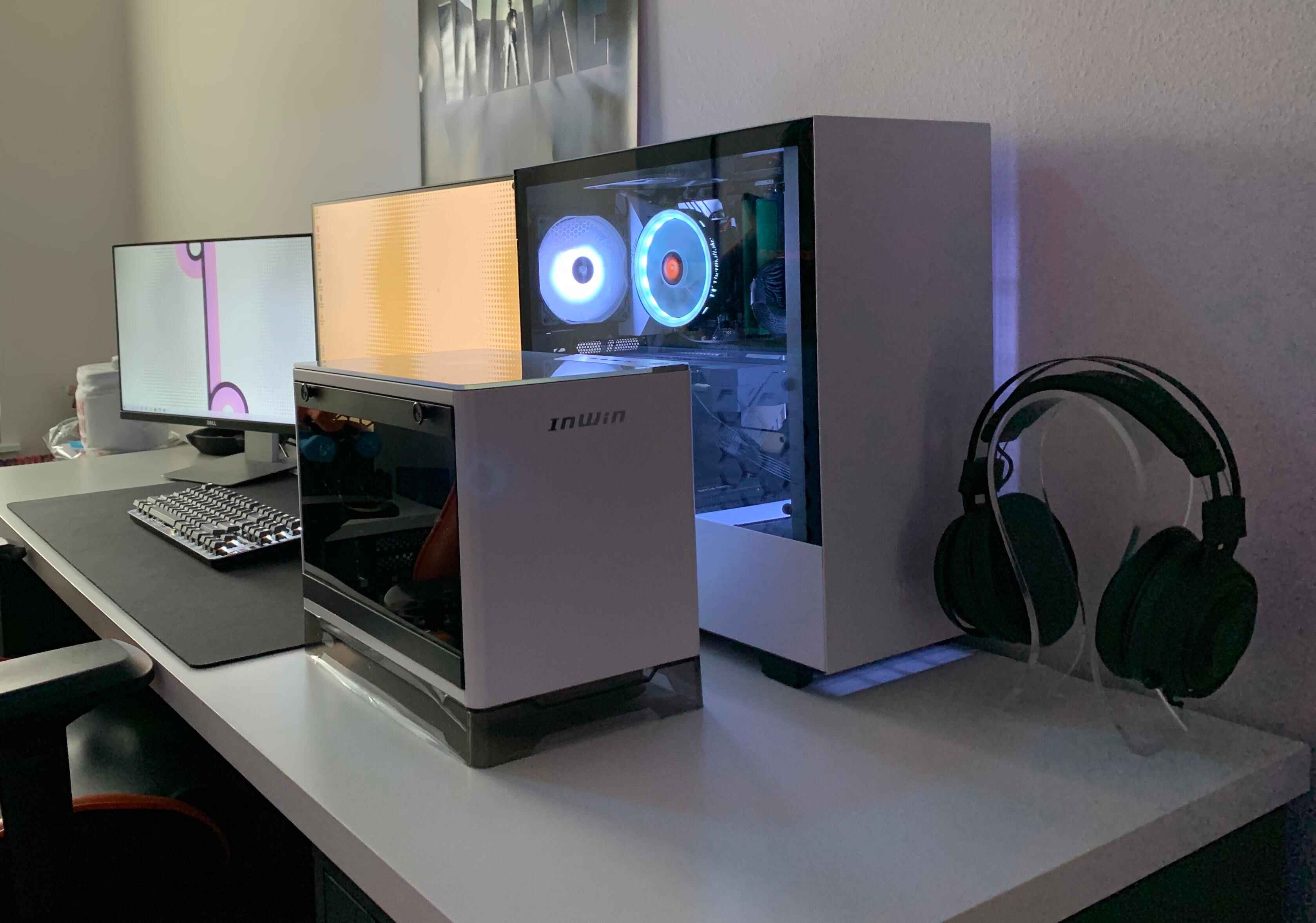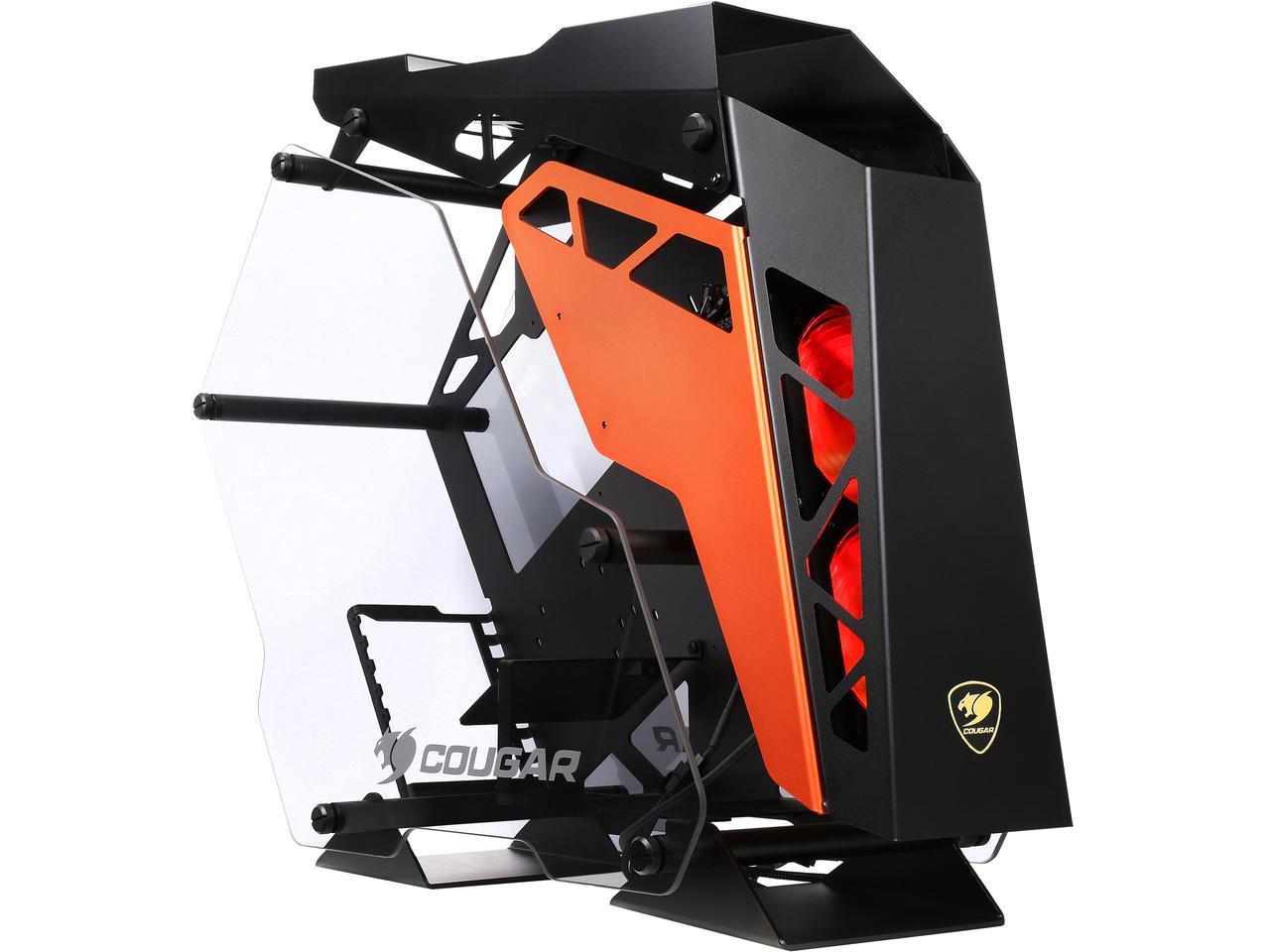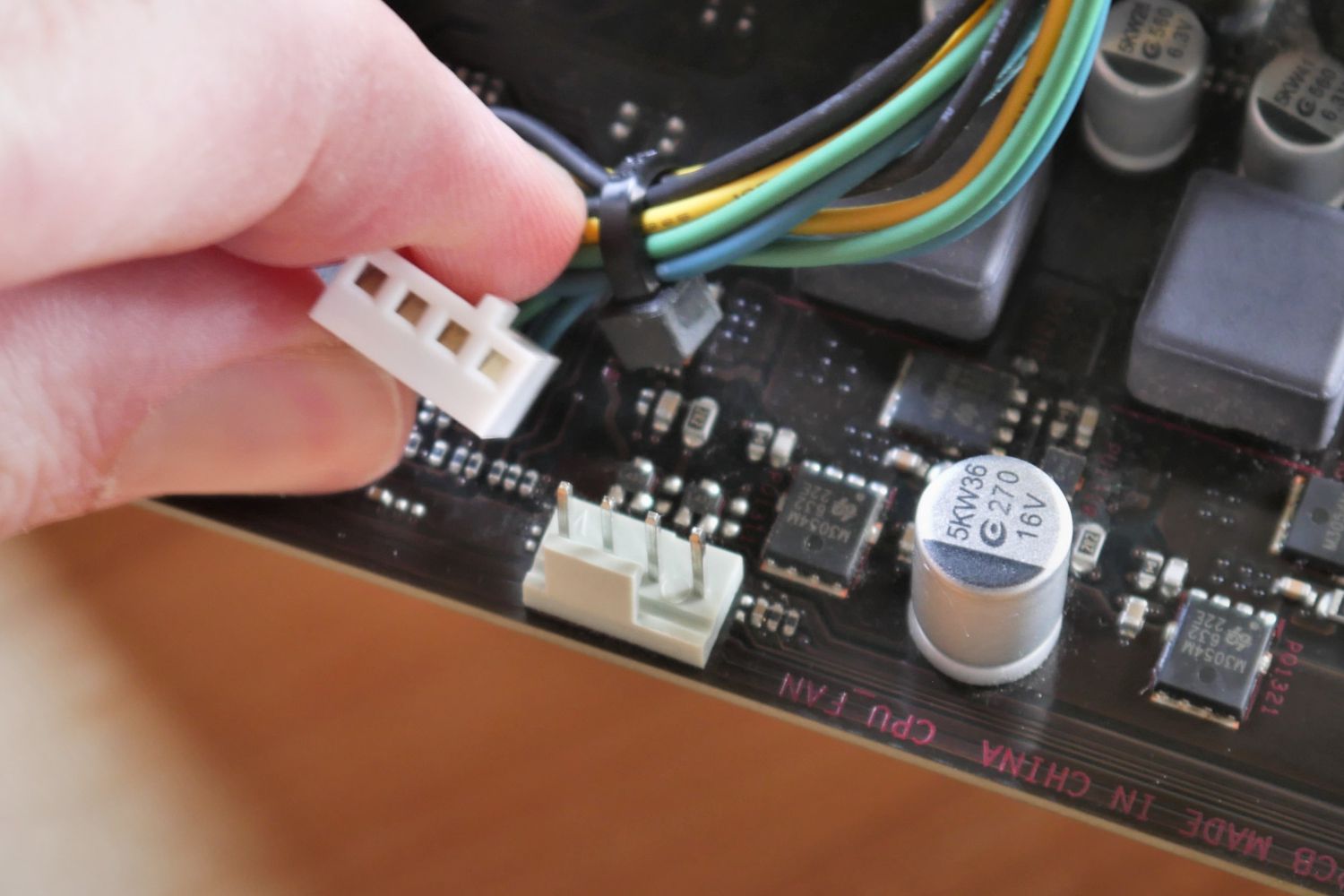Introduction
When it comes to building a gaming PC or a high-performance workstation, one crucial aspect that often gets overlooked is the case fan layout. The arrangement and positioning of case fans play a vital role in maintaining optimal airflow, heat dissipation, and overall system cooling. A well-thought-out fan layout can significantly enhance the longevity and performance of your components.
What is a Case Fan Layout?
A case fan layout refers to the strategic arrangement and placement of case fans within a computer case. It determines the direction and flow of air circulating through the case, affecting the cooling efficiency of various hardware components such as the CPU, GPU, and motherboard.
Importance of Case Fan Layout
The primary purpose of a case fan layout is to provide effective cooling to prevent overheating and potential damage to sensitive PC components. By allowing a constant flow of cool air and expelling hot air efficiently, the fan layout helps maintain optimal operating temperatures, ensuring stable performance even during intensive tasks or prolonged use.
A well-designed case fan layout not only keeps your components cool but also helps in reducing system noise. With proper airflow management, you can achieve a quieter computing experience, as the fans don’t need to work as hard to dissipate heat, resulting in a more peaceful environment.
What Is a Case Fan Layout?
A case fan layout refers to the strategic arrangement and positioning of case fans within a computer case. It involves the placement of fans in specific areas of the case to optimize airflow and cooling performance. The goal is to ensure that cool air is drawn in and hot air is expelled efficiently, keeping the internal temperature of the computer at an optimal level.
Case fan layout typically involves considering the number and size of fans, as well as their direction and orientation within the case. This layout can have a significant impact on the overall cooling efficiency of the system. Different case fan layouts are designed to cater to specific cooling needs and focus on areas such as the CPU, GPU, and motherboard.
The case fan layout can be configured in various ways, depending on the specific requirements of the system and the available space within the case. Some common case fan layouts include front to back layout, bottom to top layout, side panel layout, positive pressure layout, negative pressure layout, and balanced layout.
The front to back layout involves placing intake fans at the front of the case to draw in cool air and exhaust fans at the rear to expel hot air. This layout promotes a steady flow of air from the front to the back, efficiently cooling the internal components.
The bottom to top layout involves placing intake fans at the bottom of the case and exhaust fans at the top. This setup harnesses the natural tendency of hot air to rise, allowing for efficient heat dissipation.
The side panel layout involves placing additional fans on the side panel of the case to provide supplementary airflow for components such as the GPU. This layout can be beneficial for systems with powerful graphics cards that generate substantial heat.
The positive pressure layout involves ensuring that the intake fans produce more airflow than the exhaust fans. This setup helps prevent dust from entering the case by creating a positive pressure environment within the case.
The negative pressure layout involves ensuring that the exhaust fans produce more airflow than the intake fans. This setup can be useful for removing hot air quickly, but it may also lead to more dust accumulation in the case.
The balanced layout involves having an equal number of intake and exhaust fans, promoting a balanced airflow within the case and maintaining a steady cooling effect.
Overall, the case fan layout is a critical factor in maintaining the optimal temperature of your system. By selecting the right layout and considering factors such as airflow requirements, cooling performance, noise level, and component compatibility, you can ensure efficient cooling and prolong the life of your PC components.
Importance of Case Fan Layout
The case fan layout plays a crucial role in the overall performance and lifespan of your computer system. Proper airflow management and effective cooling are essential to prevent overheating and ensure the optimal functioning of hardware components. Let’s explore the importance of a well-designed case fan layout:
1. Temperature Control: The primary function of case fans is to regulate the internal temperature of your computer. A well-planned fan layout ensures a consistent flow of cool air into the case, while expelling hot air efficiently. This prevents heat buildup, which can cause performance issues and even damage sensitive components like the CPU and GPU.
2. Component Longevity: By keeping the system well-cooled, a proper case fan layout helps extend the lifespan of your hardware components. Excessive heat can shorten the lifespan of electronic components and lead to system instability. By maintaining optimal operating temperatures, you can ensure that your CPU, GPU, and other critical components operate within their recommended temperature range.
3. Performance Stability: Overheating can cause performance throttling, leading to reduced performance, lag, and system crashes. Effective cooling through a well-designed fan layout ensures that your system can handle demanding tasks without thermal constraints. This is especially crucial for gaming PCs and workstations that regularly handle resource-intensive applications and processes.
4. Noise Reduction: High-performance systems generate significant heat, which requires powerful fans to cool effectively. However, these fans can also generate noise. A well-thought-out case fan layout can balance airflow and fan speed, reducing the overall noise generated by the cooling system. This helps create a quieter and more enjoyable computing experience.
5. Dust and Particle Prevention: A properly configured fan layout can help prevent dust and particles from accumulating inside the case. Creating positive air pressure with more intake fans than exhaust fans can effectively keep dust out. Regular cleaning of the intake filters and periodically checking the fan blades can help maintain optimal airflow and reduce the risk of overheating caused by dust buildup.
6. Compatibility and Expandability: The fan layout should also consider the compatibility and expandability of the system. It should allow for the addition of more fans or cooling solutions if needed, ensuring that the system can adapt to future upgrades and modifications without compromising cooling efficiency.
A well-planned case fan layout is a critical aspect of building a high-performance and reliable computer system. By considering factors such as airflow requirements, cooling performance, noise level, and component compatibility, you can create an optimal cooling solution that ensures the longevity and stability of your PC components.
Different Case Fan Layouts
There are several different case fan layouts that can be implemented to optimize airflow and cooling within a computer system. Each layout has its advantages and is designed to cater to specific cooling needs. Let’s explore some popular case fan layouts:
1. Front to Back Layout: In this layout, intake fans are positioned at the front of the case, while exhaust fans are placed at the rear. This configuration promotes a steady flow of cool air from the front to the back of the case, efficiently cooling the internal components. It is a commonly used layout for proper ventilation and effective heat dissipation.
2. Bottom to Top Layout: In the bottom to top layout, intake fans are situated at the bottom of the case, while exhaust fans are located at the top. This arrangement takes advantage of the natural tendency of hot air to rise. The cool air is drawn in from the bottom, and the hot air is expelled from the top, providing efficient cooling and heat dissipation.
3. Side Panel Layout: The side panel layout involves installing additional fans on the side panel of the case. These fans provide extra airflow and cooling specifically targeted towards components such as the graphics card. This layout can help reduce GPU temperatures, ensuring optimal performance during demanding tasks.
4. Positive Pressure Layout: The positive pressure layout involves creating a higher intake airflow compared to the exhaust airflow. This results in positive air pressure inside the case, preventing dust and debris from entering through unsealed gaps and openings. This layout can help maintain a cleaner system interior and reduce the frequency of cleaning and maintenance.
5. Negative Pressure Layout: In contrast to the positive pressure layout, the negative pressure layout involves creating a higher exhaust airflow compared to the intake airflow. This layout focuses on quickly expelling hot air from the case, which can help in reducing overall system temperature. However, it may also result in increased dust accumulation inside the case.
6. Balanced Layout: The balanced layout involves maintaining an equal number of intake and exhaust fans in the case. This layout aims to achieve a balanced airflow within the case and ensure efficient cooling across all components. It provides a good compromise between cooling performance and dust management.
When selecting a case fan layout, consider the specific cooling requirements of your components, the available space in your case, and the noise level you are comfortable with. Additionally, ensure that the layout is compatible with your case and the hardware components you plan to install.
By choosing the appropriate case fan layout and optimizing airflow, you can effectively cool your system, enhance performance, and increase the longevity of your hardware components.
Front to Back Layout
The front to back case fan layout is a popular choice for optimizing airflow and cooling efficiency in computer systems. In this layout, intake fans are positioned at the front of the case, while exhaust fans are placed at the rear. This configuration promotes a steady flow of cool air into the case, which is then expelled as hot air through the rear exhaust fans.
By having intake fans at the front, the front to back layout ensures that cool air is drawn in from outside the case directly over the hardware components. This allows for efficient cooling of components such as the CPU, GPU, and motherboard. The cool air helps dissipate heat generated by these components, maintaining optimal operating temperatures and preventing thermal throttling.
The expelled hot air is then directed towards the rear of the case, where the exhaust fans are positioned. These fans rapidly remove the hot air from the case, preventing it from recirculating and potentially raising the overall temperature. The rear exhaust fans can be either larger fans or multiple smaller fans, depending on the case and the cooling requirements.
The front to back layout benefits from the natural convection process, where hot air rises. As the intake fans draw cool air from the front, it passes over the components and absorbs heat, becoming warmer. The warm air then rises towards the rear of the case and is expelled by the exhaust fans. This convection flow aids in efficient heat dissipation throughout the system.
One advantage of the front to back layout is its simplicity and compatibility with a wide range of computer cases. It is a straightforward configuration that works well with both mid-tower and full-tower cases, providing consistent cooling across the entire system.
When implementing the front to back layout, it is essential to consider the positioning and number of fans. The number of intake and exhaust fans should be balanced to ensure proper airflow. Additionally, filters can be added to the front intake fans to prevent dust from entering the case.
However, one downside of the front to back layout is that it may not be the most effective when it comes to cooling specific components, such as graphics cards. GPUs tend to generate a significant amount of heat, and in some cases, additional fans or a side panel layout might be necessary to provide targeted cooling for the GPU.
Overall, the front to back case fan layout is an effective and straightforward method to maintain optimal airflow and cooling in your computer system. It ensures that cool air is efficiently delivered to the components, while hot air is expelled to prevent heat buildup. By implementing this layout, you can enhance the longevity and performance of your PC components.
Bottom to Top Layout
The bottom to top case fan layout is a configuration that takes advantage of the natural tendency of hot air to rise. In this layout, intake fans are positioned at the bottom of the case, while exhaust fans are located at the top. This arrangement promotes efficient heat dissipation and optimal airflow within the computer system.
With the intake fans at the bottom, cool air is drawn into the case from underneath. This cooler air is then directed upwards towards the components, including the CPU, GPU, and motherboard. By positioning the intake fans at the bottom, you ensure that the coolest air is delivered to these critical components, helping to maintain lower operating temperatures.
As the components generate heat during operation, the warm air naturally rises. The bottom to top layout takes advantage of this phenomenon by having exhaust fans at the top of the case. These fans expel the hot air out of the system, preventing it from recirculating and contributing to increased temperatures. The hot air rises and is effectively exhausted through the top of the case.
The bottom to top layout is particularly beneficial in larger full-tower cases, where there is more vertical space. It allows for a more natural and direct flow of air, harnessing convection to aid in efficient heat dissipation. The warm air rises from the bottom, guided by the components, and is effectively expelled through the top exhaust fans.
This layout is especially advantageous for systems with high-powered components, such as gaming PCs and workstations. Graphics cards, for example, tend to generate significant heat during intensive gaming or rendering tasks. The bottom to top layout ensures that cool air is drawn directly to the GPU, keeping it at optimal operating temperatures and preventing performance throttling.
However, it is important to consider that the bottom to top layout may not be suitable for all cases or situations. Smaller cases or those with limited vertical space may not provide enough room for effective airflow in this configuration. Additionally, the bottom intake fans can be more susceptible to dust and debris, as they are closer to the ground. Regular cleaning and maintenance of the intake filters are essential to prevent dust buildup.
To implement the bottom to top layout, ensure that the intake fans at the bottom and the exhaust fans at the top are properly positioned and aligned for efficient airflow. Additionally, consider the size and speed of the fans to match the cooling requirements of the system.
In summary, the bottom to top case fan layout is an effective configuration that leverages the natural upward movement of hot air. It allows for efficient cooling and heat dissipation, particularly for systems with high-powered components. By implementing this layout, you can ensure optimal temperatures and enhance the performance and longevity of your computer system.
Side Panel Layout
The side panel layout is a case fan configuration that involves installing additional fans on the side panel of the computer case. This layout is specifically designed to provide supplementary airflow and targeted cooling, particularly for components such as the graphics card.
Graphics cards are known to generate a significant amount of heat, especially during demanding tasks like gaming or 3D rendering. The side panel layout helps alleviate this heat by directing cool air directly towards the GPU, enhancing its cooling performance and preventing overheating.
By adding intake fans on the side panel, fresh air is directed towards the graphics card, providing a dedicated flow of cool air. This reduces the reliance solely on the front or bottom intake fans to cool the GPU, ensuring that it operates at optimal temperatures for maximum performance and longevity.
The side panel layout is most effective when the fans are positioned to blow directly onto the graphics card, either vertically or horizontally. Cooling can be further enhanced by using fans with adjustable angles or installing fan brackets that allow for precise positioning.
In addition to cooling the GPU, the side panel fans can also help improve overall case ventilation. They can provide additional airflow to other components, such as the motherboard or storage drives, reducing the overall temperature and enhancing overall system stability.
It is worth noting that the side panel layout may require additional space inside the case to accommodate the fans and provide clearance for the components. Therefore, it is essential to ensure that the case has sufficient space for the side panel fans and that it supports mounting options for the fans on the side panel.
While the side panel layout can significantly benefit systems with powerful graphics cards, it may not be necessary for every setup. If your system uses a less demanding GPU or has other effective cooling solutions in place, such as a robust front-to-back or bottom-to-top layout, the side panel fans may not provide significant additional cooling benefits.
When configuring the side panel layout, it is crucial to consider the placement and size of the fans, as well as their compatibility with the case. Airflow direction, fan speed, and noise level should also be taken into account to achieve the desired cooling performance while maintaining an acceptable noise level.
Overall, the side panel layout is a valuable case fan configuration for cooling powerful graphics cards and enhancing overall system ventilation. By providing targeted cooling to the GPU, it ensures optimal performance and reliability during resource-intensive tasks. Consider implementing this layout if you have a high-end graphics card or prioritize maximum cooling efficiency for your system.
Positive Pressure Layout
The positive pressure case fan layout is a configuration aimed at creating a higher intake airflow compared to the exhaust airflow within the computer case. This layout ensures that more cool air is being pushed into the case than is being expelled, resulting in positive air pressure. The positive pressure helps to prevent dust and debris from entering the case through unsealed gaps and openings.
In the positive pressure layout, more intake fans are utilized compared to the exhaust fans. This allows for a consistent flow of fresh air into the case, which helps to keep the internal components cool and improves overall system stability. The intake fans can be positioned at the front, bottom, or side panels of the case, depending on the specific case design.
The positive pressure created by the layout effectively pressurizes the case, reducing the chances of dust particles entering through unfiltered openings. This can be beneficial in maintaining a cleaner system interior and reducing the frequency of cleaning and maintenance. By minimizing dust buildup, you can prevent airflow obstruction and potential damage to the components.
This layout is particularly useful in environments that are prone to dust or where the computer system is placed in areas where dust accumulation is a concern. It is also beneficial for those who prefer a cleaner and more dust-free system interior.
It is important to note that while the positive pressure layout helps keep the system cleaner, it does not eliminate the need for regular cleaning. Dust can still accumulate on the intake filters and the fans themselves, so cleaning and maintenance should still be done periodically to ensure optimal airflow and cooling efficiency.
When implementing the positive pressure layout, it is crucial to ensure that the intake fans have dust filters to prevent dust from being drawn inside the case. Additionally, the capacity of the intake fans should match the cooling requirements of the system to maintain an ideal airflow balance.
While the positive pressure layout offers benefits in terms of dust prevention, it is important to ensure that the heat generated by the components is effectively dissipated. Proper placement and configuration of the intake and exhaust fans are essential to maintain adequate cooling performance for the system.
Overall, the positive pressure case fan layout is an effective method to create a cleaner and more dust-free system interior. By maintaining a higher intake airflow compared to the exhaust airflow, it helps prevent dust accumulation, extends the life of components, and ensures optimal cooling and performance for your computer system.
Negative Pressure Layout
The negative pressure case fan layout is a configuration that focuses on creating a higher exhaust airflow compared to the intake airflow within the computer case. This layout ensures that more hot air is being expelled from the case than cool air being drawn in, resulting in negative air pressure. The negative pressure helps to quickly expel hot air and potentially reduce overall system temperature.
In the negative pressure layout, more exhaust fans are utilized compared to intake fans. This configuration is particularly useful for systems that generate a significant amount of heat, such as those with high-performance components or overclocked CPUs. The excess heat generated by these components can be efficiently expelled from the case, reducing the risk of overheating and improving performance stability.
The negative pressure created by the layout encourages hot air to be rapidly exhausted from the case. This prevents the hot air from recirculating within the case, allowing for a consistent flow of cool air from any available openings or unfiltered areas. The exhaust fans are usually positioned at the rear and top of the case, where hot air naturally rises.
One advantage of the negative pressure layout is that it can quickly remove heat from the system, particularly in situations where component cooling is challenging, such as cramped or poorly ventilated cases. By efficiently expelling hot air, this layout can help maintain optimal operating temperatures for the hardware components.
However, it is important to note that the negative pressure layout can potentially lead to more dust accumulation inside the case. With more exhaust fans creating negative air pressure, it can draw in air from unfiltered openings or gaps, allowing dust and debris to enter. Regular cleaning and maintenance of the system, including the intake and exhaust fans, is crucial to prevent dust buildup and ensure optimal airflow.
When implementing the negative pressure layout, it is important to consider the placement and size of the exhaust fans. The fans should be efficient in expelling hot air and matched in capacity with the cooling requirements of the system. Additionally, sealing any unfiltered openings or gaps can help minimize the ingress of dust.
Overall, the negative pressure case fan layout is an effective configuration for systems that generate a significant amount of heat. By creating a higher exhaust airflow compared to the intake airflow, it can efficiently remove hot air from the case. However, regular cleaning and maintenance of the system are necessary to prevent excessive dust accumulation and maintain optimal cooling performance.
Balanced Layout
The balanced case fan layout is a configuration that aims to achieve an equal number of intake and exhaust fans within the computer case, promoting a balanced airflow. This layout ensures proper ventilation and efficient cooling across all components, providing a harmonious and effective cooling solution.
In the balanced layout, an equal number of intake and exhaust fans are distributed strategically throughout the case. This allows for a steady and consistent flow of cool air into the case, while hot air is effectively expelled. The balanced configuration optimizes airflow management, preventing hot spots and maintaining uniform cooling for all components.
By maintaining a balanced airflow, the balanced layout helps in achieving optimal operating temperatures for the CPU, GPU, motherboard, and other components. It prevents overheating of individual components and ensures stable performance even during demanding tasks or extended periods of use.
One advantage of the balanced layout is its versatility and compatibility with different case sizes and component layouts. It can be implemented effectively in both mid-tower and full-tower cases, providing efficient cooling for a wide range of PC configurations.
The balanced layout also offers benefits in terms of noise reduction. With a balanced number of intake and exhaust fans, the overall airflow is more controlled and evenly distributed. This can result in reduced fan speeds, leading to quieter operation without sacrificing cooling performance.
When implementing a balanced layout, it is important to consider the positioning and size of the intake and exhaust fans. Placing the intake fans at the front or bottom of the case, and the exhaust fans at the rear or top, provides an optimal airflow path. Ensuring that the fans are evenly distributed throughout the case promotes effective cooling for all components.
Additionally, regular maintenance and cleaning of the intake filters and fan blades are essential to prevent dust accumulation and maintain optimal airflow. This is particularly important for a balanced layout, as any blockages or obstructions can disrupt the overall airflow balance and lead to higher temperatures.
The balanced layout is a reliable and versatile case fan configuration that ensures effective cooling and stable performance for your computer system. By achieving a balance between intake and exhaust fans, it promotes proper ventilation, maintains optimal operating temperatures, and reduces noise. Consider implementing a balanced layout for a well-balanced and efficient cooling solution for your PC.
Factors to Consider When Choosing a Case Fan Layout
When selecting a case fan layout for your computer system, several important factors should be considered. The choice of fan layout can significantly impact the cooling performance, noise level, and overall functionality of your system. Here are some key factors to consider when choosing a case fan layout:
1. Airflow Requirements: Assessing the airflow requirements of your components is crucial. Different hardware configurations, such as high-performance CPUs or multiple graphics cards, may require increased airflow to prevent overheating. Understanding the cooling needs of your system will help determine the number and placement of fans necessary for an effective layout.
2. Cooling Performance: The primary purpose of a case fan layout is to provide efficient cooling to your components. Consider the specific cooling demands of your CPU, GPU, and other components. A well-designed layout should ensure that cool air is effectively delivered to these critical areas while expelling hot air efficiently.
3. Noise Level: The noise level of your system can greatly impact your overall computing experience. It is important to strike a balance between cooling performance and noise reduction. Choose fans with lower noise levels or consider fan speed control options to achieve a quieter system without compromising cooling efficiency.
4. Compatibility with Components: Ensure that the chosen fan layout is compatible with your case and components. Factor in the physical space available within the case for mounting fans and consider any clearance restrictions imposed by your CPU cooler, graphics card, or other large hardware components. This will prevent any conflicts or restrictions that may hinder the installation or performance of the fans.
5. Case Design and Size: The design and size of your case influence the available options for fan placements. Some cases have dedicated mounting positions for specific fan sizes, while others may have restrictions on fan sizes or limited space for additional fans. Consider the layout options provided by your case and choose a fan configuration that fits seamlessly with the case design.
6. Cable Management: Proper cable management is essential for maintaining an organized and efficient airflow within the case. Consider the arrangement of cables, especially those connected to fans, and ensure they do not obstruct the airflow or interfere with the fan blades. Neatly routing and securing cables can optimize airflow and prevent any disruptions caused by cable congestion.
7. Future Expansion: Consider the potential for future upgrades or additions to your system. Choose a fan layout that allows for flexibility and future expandability. It should accommodate additional fans or cooling solutions as needed, ensuring that your system can adapt to the changing requirements of your components.
By carefully considering these factors, you can choose a case fan layout that best suits your specific needs. Whether you prioritize cooling performance, noise reduction, or system compatibility, the right fan layout will help maintain optimal temperatures, extend component lifespan, and enhance the overall functionality and longevity of your computer system.
Airflow Requirements
When determining the case fan layout for your computer system, it is crucial to assess the airflow requirements of your components. Different hardware configurations have varying cooling needs, and understanding these requirements is essential to ensure optimal cooling performance and prevent overheating.
Each component within your system, such as the CPU, GPU, and motherboard, generates heat during operation. The airflow provided by the case fans helps dissipate this heat, maintaining safe operating temperatures and preventing thermal throttling.
High-performance CPUs and graphics cards, for example, often demand enhanced cooling due to their increased power consumption and heat output. Overclocked CPUs also require additional airflow to manage the higher thermal load. Assessing the specific cooling requirements of these components will guide you in determining the number of fans needed and the placement within your case.
Consider the manufacturer’s recommendations for cooling and the power consumption specifications of your components. Some manufacturers provide thermal design power (TDP) values that indicate the amount of heat generated by their products. These values can serve as a reference for determining the appropriate cooling solution.
Additionally, the number and intensity of tasks you typically perform on your computer should be taken into account. If you regularly engage in resource-intensive tasks such as gaming, video editing, or 3D rendering, your system will benefit from additional airflow to handle the increased heat output during these demanding activities.
Certain case fan layouts, such as the front to back or the bottom to top layout, provide a consistent airflow path through the case, allowing cool air to reach the components effectively. However, more powerful configurations may require additional fans or even alternative layouts, such as the side panel layout, to deliver targeted cooling to specific components, such as the GPU.
It is important to strike a balance between cooling performance and noise level. While increasing the number of fans can provide better cooling, it may also result in higher noise levels as the fans run at higher speeds. To achieve an optimal airflow solution, consider fans with higher airflow and static pressure ratings, as well as quieter operation.
By carefully assessing the airflow requirements of your components and considering the demands of your computing tasks, you can choose a case fan layout that provides sufficient cooling to maintain optimal temperatures. Adequate airflow ensures the longevity and performance of your hardware components, preventing overheating-related issues and enhancing the overall functionality and stability of your computer system.
Cooling Performance
When choosing a case fan layout, one of the key factors to consider is the cooling performance it provides. Effective cooling is essential to maintain optimal operating temperatures for your components, preventing heat-related issues and ensuring stable performance.
The cooling performance of a fan layout is determined by how well it circulates air within the case, dissipates heat from the components, and regulates temperature levels. The layout should facilitate the efficient flow of cool air to the areas that require cooling and expel hot air from the case effectively.
The number and placement of fans play a crucial role in cooling performance. Strategically positioning intake fans at locations where cool air can be drawn in, such as the front, bottom, or side panels, ensures a consistent flow of fresh air to the components. Exhaust fans, typically placed at the rear or top, expel the hot air generated by the components.
The orientation and direction of the airflow can also impact cooling performance. Directing airflow across specific components, such as the CPU or GPU, can help dissipate heat more effectively. For example, side panel fans or CPU-specific cooling solutions can provide targeted cooling to these high-heat areas.
Moreover, the size and speed of the fans also influence cooling efficiency. Larger fans tend to move more air at lower speeds, resulting in improved cooling performance with reduced noise levels. However, smaller fans can be useful in tight spaces or when additional airflow is required in specific areas.
Another factor to consider is the airflow rating and static pressure of the fans. Higher airflow fans provide greater air movement, ensuring better cooling potential. Likewise, fans with higher static pressure are more effective at overcoming airflow resistance, such as when pushing air through dense cooling fins or filters.
In addition to fan layout, the use of aftermarket CPU coolers, GPU coolers, or liquid cooling systems can further enhance cooling performance. These specialized cooling solutions can effectively dissipate heat directly from the source, keeping critical components at optimal temperatures.
Cooling performance should also be viewed in conjunction with the overall system load and ambient temperature. Systems under heavy workload or operated in warm environments may require more robust cooling configurations to maintain suitable temperatures.
Regular maintenance, such as cleaning dust filters and ensuring unobstructed airflow paths, is critical to maintaining cooling performance over time. The accumulation of dust can obstruct airflow and compromise cooling efficiency, leading to higher temperatures and potentially reduced component lifespan.
By considering fan placement, size, orientation, and supplementary cooling options, you can select a case fan layout that delivers optimal cooling performance for your system. The right layout will help maintain safe operating temperatures, prevent heat-related issues, and maximize the longevity and performance of your components.
Noise Level
When choosing a case fan layout, considering the noise level is essential to ensure a quieter computing experience. Fans are integral for cooling, but they can also contribute to the overall noise produced by your system. Striking a balance between cooling performance and noise reduction is crucial to create a comfortable and enjoyable environment.
The noise level of a fan is typically measured in decibels (dB). Fans with lower dB ratings produce less noise when operating at the same speed. Opting for fans with lower noise levels can help minimize distractions and create a quieter atmosphere, especially for those who prioritize a peaceful computing environment.
There are several factors that influence fan noise, including the fan design, size, speed, and the materials used. Larger fans tend to operate at lower speeds, resulting in quieter performance while still maintaining sufficient airflow. Similarly, fans with advanced bearing technologies, such as fluid or magnetic bearings, are often quieter than those with traditional sleeve bearings.
To further reduce noise levels, consider fans with built-in noise-reducing features. Some fans incorporate noise-dampening materials or innovative blade designs that reduce turbulence and airflow noise. These fans can help maintain optimal cooling performance while minimizing the noise output.
Controlling fan speed is another effective way to manage noise levels. Most modern motherboards and fan controllers offer options for fan speed control. By adjusting the fan speeds to operate at lower RPMs, you can reduce noise while still ensuring adequate airflow for cooling. Fan speed control can be achieved through the motherboard’s BIOS settings, dedicated fan controllers, or specialized software.
Another consideration for noise reduction is the placement of fans within the case. Intake fans located behind dust filters or in areas with restricted airflow may need to operate at higher speeds to overcome the obstruction, resulting in increased noise levels. Ensuring unobstructed airflow paths, proper cable management, and installing high-quality dust filters can help maintain optimal airflow while reducing noise.
Lastly, it is important to note that fan noise can vary depending on personal sensitivity and tolerance. While some users prefer complete silence, others may not be as bothered by fan noise. Consider your personal preferences and the environment in which your system is situated to determine the acceptable noise level.
By carefully selecting fans with lower noise levels, utilizing fan speed control, optimizing fan placement, and managing airflow obstructions, you can create a case fan layout that balances cooling performance with noise reduction. This in turn will provide a quieter and more enjoyable computing experience without sacrificing essential cooling requirements.
Compatibility with Components
Compatibility with components is a crucial factor to consider when choosing a case fan layout. The fan layout should be compatible with your specific case design and the various hardware components within your system to ensure optimal functionality and performance.
One aspect of compatibility is the physical space available within your case. Different case sizes, such as mini-ITX, micro-ATX, or full-tower, offer varying amounts of space for fans and cooling solutions. It is important to ensure that the chosen fan layout can be accommodated within your case, allowing for proper installation and clearance of components.
Consider the dimensions of the fans and their mounting positions within your case. Some cases have dedicated mounting points or brackets for specific fan sizes and configurations, while others offer more flexibility. Ensure that the chosen fan layout aligns with the available fan mounting options provided by your case.
Component compatibility is also crucial when considering a fan layout. Large CPU coolers, oversized graphics cards, or other bulky components may obstruct fan placements or limit the available space for fans. It is essential to check clearance restrictions and ensure that the fan layout does not interfere with the installation or performance of these components.
Additionally, pay attention to the power requirements of the fans and the available fan headers on your motherboard. Ensure that you have sufficient fan connectors or PWM (pulse width modulation) headers to support the number of fans in your chosen layout. If needed, fan splitters or hub controllers can be used to expand the number of fan connections.
Some cases may offer additional features that need to be taken into account, such as removable drive cages, radiator mounting options, or side panel ventilation. Consider these features when planning your fan layout to maximize compatibility and effectively utilize the available space within your case.
Compatibility with components also extends to the rest of your system. Ensure that the selected fan layout does not interfere with the installation or operation of other components, such as RAM modules or storage drives. Cable management should also be considered to prevent cable obstructions that can disrupt the fan airflow or inhibit the installation of fans.
Perform ample research on the specifications and compatibility of your chosen case, components, and desired fan layout. Consult the manufacturer’s documentation, case reviews, or online communities to gather information and insights from others who have experience with similar configurations.
By considering the physical space, clearance requirements, power compatibility, and other features of your case and components, you can select a case fan layout that is compatible with your system. This will ensure optimal functionality, prevent any conflicts or restrictions, and maximize the effectiveness of the cooling solution.
Conclusion
Choosing the right case fan layout is crucial for maintaining optimal temperatures, preventing overheating, and enhancing the overall performance and longevity of your computer system. Various factors need to be considered when selecting a fan layout, including airflow requirements, cooling performance, noise level, compatibility with components, and case design.
Assessing the airflow requirements of your components helps determine the number and placement of fans needed to achieve effective cooling. Considering the cooling performance ensures that the chosen fan layout efficiently dissipates heat from critical components, such as the CPU and GPU.
To create a quieter computing environment, paying attention to the noise level of fans is important. Opting for fans with lower noise levels, managing fan speeds, and optimizing fan placement can help achieve a balance between cooling performance and noise reduction.
Compatibility with components is crucial to ensure proper fan installation and clearance within the case. Considering physical space, clearance restrictions, power compatibility, and other features of your case and components is essential for a well-designed and functional fan layout.
In conclusion, when choosing a case fan layout, it is important to strike a balance between cooling performance, noise reduction, and compatibility with your components and case design. By considering the specific needs of your system, you can select a fan layout that provides optimal cooling, minimizes noise, and maximizes the lifespan and performance of your computer system. Proper planning and research will help you create an efficient and effective fan configuration that keeps your components cool, maintains stable performance, and enhances your overall computing experience.







